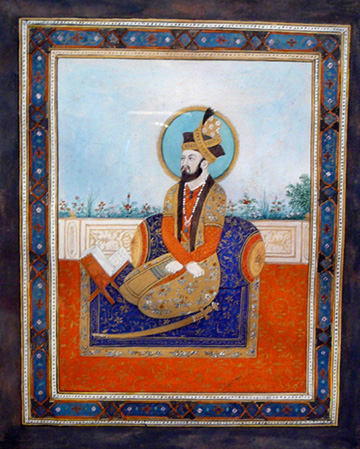B
Answer:
B
Nasir-ud-Din Muhammad (6 March 1508-27 January 1556) better known by his regnal name, Humayun, was the second emperor of the Mughal Empire, who ruled over territory in what is now Afghanistan, Pakistan, and parts of northern India from 1531-1540 and again from 1555-1556. Like his father, Babur, he lost his kingdom early but regained it with the aid of the Safavid dynasty of Persia, with additional territory. At the time of his death in 1556, the Mughal Empire spanned almost one million square kilometers.
In December 1530, Humayun succeeded his father as ruler of the Mughal territories in the Indian subcontinent. At the age of 23, Humayun was an inexperienced ruler when he came to power. His half-brother Kamran Mirza inherited Kabul and Lahore, the northernmost parts of their father's empire. Mirza was to become a bitter rival of Humayun.
Humayun lost Mughal territories to the Pashtun noble, Sher Shah Suri, but regained them 15 years later with Safavid aid. Humayun's return from Persia was accompanied by a large retinue of Persian noblemen and signaled an important change in Mughal court culture. The Central Asian origins of the dynasty were largely overshadowed by the influences of Persian art, architecture, language, and literature. There are many stone carvings and thousands of Persian manuscripts in India dating from the time of Humayun.
Click me to Read more Question & Answer of
 The Mughal Empire
The Mughal Empire
Share this MCQ
 Vedic period
Vedic period  Jainism
Jainism  Buddhism
Buddhism  Advent of Europeans
Advent of Europeans 